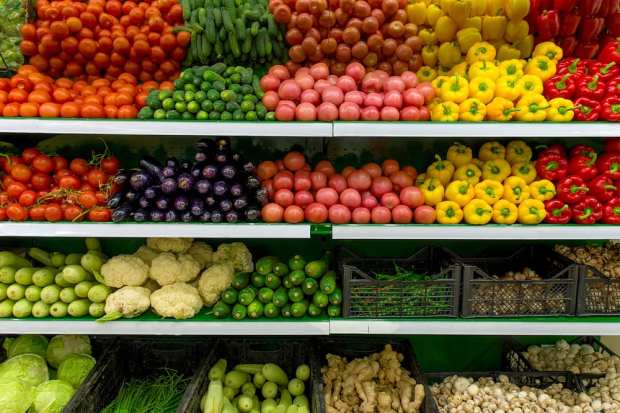Taking A Mobile Order-Ahead Approach To Surplus Groceries

Supermarkets buy inventory to sell to consumers, but some of those products never end up in their hands, and instead become food waste. The USDA forecasts that grocers lose a whopping $15 billion each year in unsold fruits and vegetables. And one report notes that “without accounting for GHG emissions from land use change, the carbon footprint of food produced and not eaten is estimated to 3.3 Gtonnes of CO2 equivalent: as such, food wastage ranks as the third top emitter after USA and China.”
Some companies are aiming to tackle this economic and environmental challenge with the help of mobile order-ahead innovation. Canada’s FoodHero, in one case, has technology that connects retailers with consumers to help sell surplus food that might otherwise be wasted.
To begin using the service, shoppers download the free app from the App Store or the Google Play store. Once logged into the app, they can choose to have their phone geolocate them, enter a postal code or enter their locations. The app then shows the surplus foods that are currently available at nearby stores.
The platform features perishables and fresh produce such as meat, fish, bakery items, fruits and vegetables. The company sometimes offers some non-perishable food items, such as canned goods and boxes of cereal, but the idea is to concentrate on fresh food as much as possible, Founder and CEO Jonathan Defoy told PYMNTS.
After making their selections via the app, shoppers can check out with their credit or debit cards through Stripe. The process takes just two minutes, Defoy said. After completing the transaction, the customer heads to a local store to pick up their order anytime during the store’s regular operating hours.
The Consumer Market
The FoodHero platform has two primary consumer audiences. One subset is “eco-friendly” with an environmental mindset, according to Defoy. The other type of consumer is looking to save money via substantial discounts. (The app offers food marked down by up to 60 percent.) There are also consumers that fall into both categories – “they’re looking for savings, but they’re also very happy to help the planet at the same time,” noted Defoy.
Devoy noted that many of FoodHero’s shoppers have tried services such as Instacart, and may have ordered online from their favorite retailers. The company is not expecting those consumers to adopt an entirely new habit.
On the retailer side, the company has developed technology and procedures for merchants to use when they start with the platform. Defoy said it’s simple and inexpensive in terms of equipment, and that it takes only a few days to onboard retailers. The firm has also created an algorithm that optimizes the rebates retailers should offer to customers.
The Retail Market
FoodHero is focused on grocery stores and supermarkets for now, but bakeries, meat markets and fish markets can also use the platform. Its technology could also be leveraged by restaurants, although well-run chain restaurants are wasting less percentage of their volume than grocery stores, as they have taken years to develop mechanisms to reduce waste, Devoy noted. However, single-location restaurants tend to have a lot of waste.
Grocery stores enjoy financial benefits from adopting the platform – the most obvious of which is the ability to sell food that might otherwise go unsold. (Grocers, after all, might know that they can’t sell the food before its best before date.) But Defoy pointed out other ripple effects: The platform benefits the store’s brand and reduces their waste.
In the future, FoodHero aims to expand its platform to essentially everywhere in North America, and plans to work with big chains before reaching smaller stores as well as restaurants.
Within five to 10 years, Defoy said the company aims to make an impact on “every step” of the food chain or ecosystem to reduce waste. And in addition to connecting shoppers with retailers that have surplus food, FoodHero will also seek to educate consumers about reducing waste in their homes.
